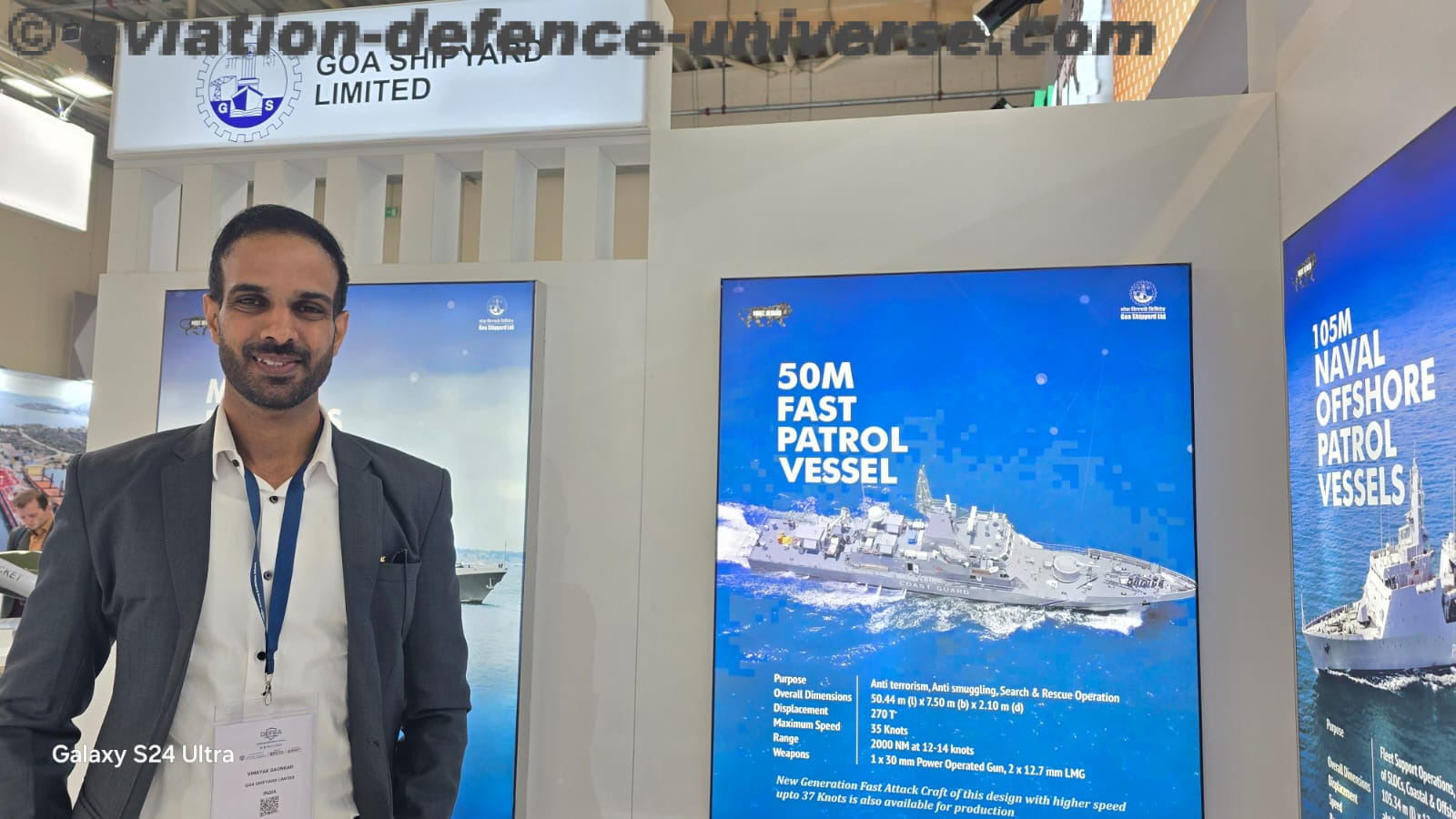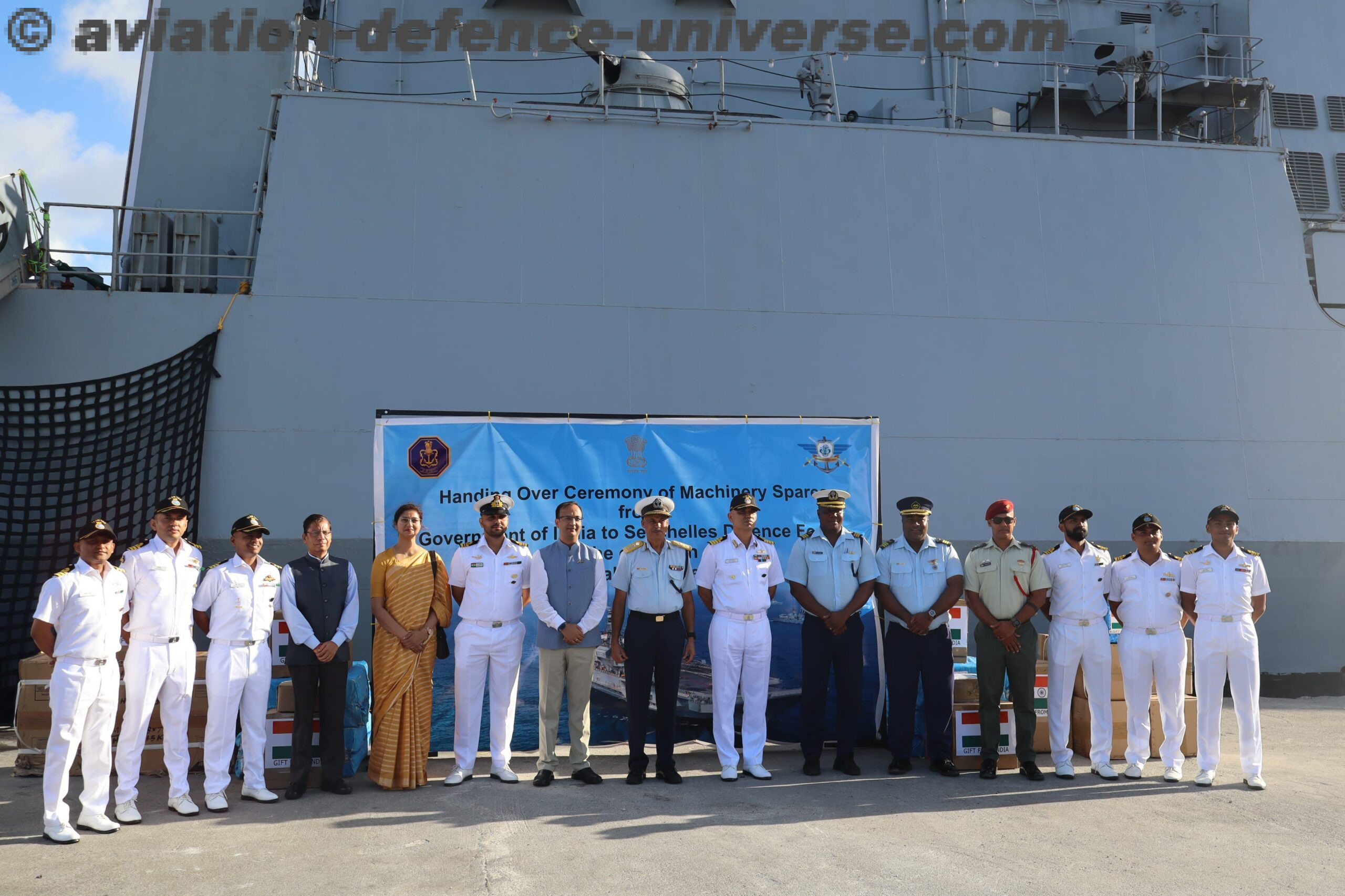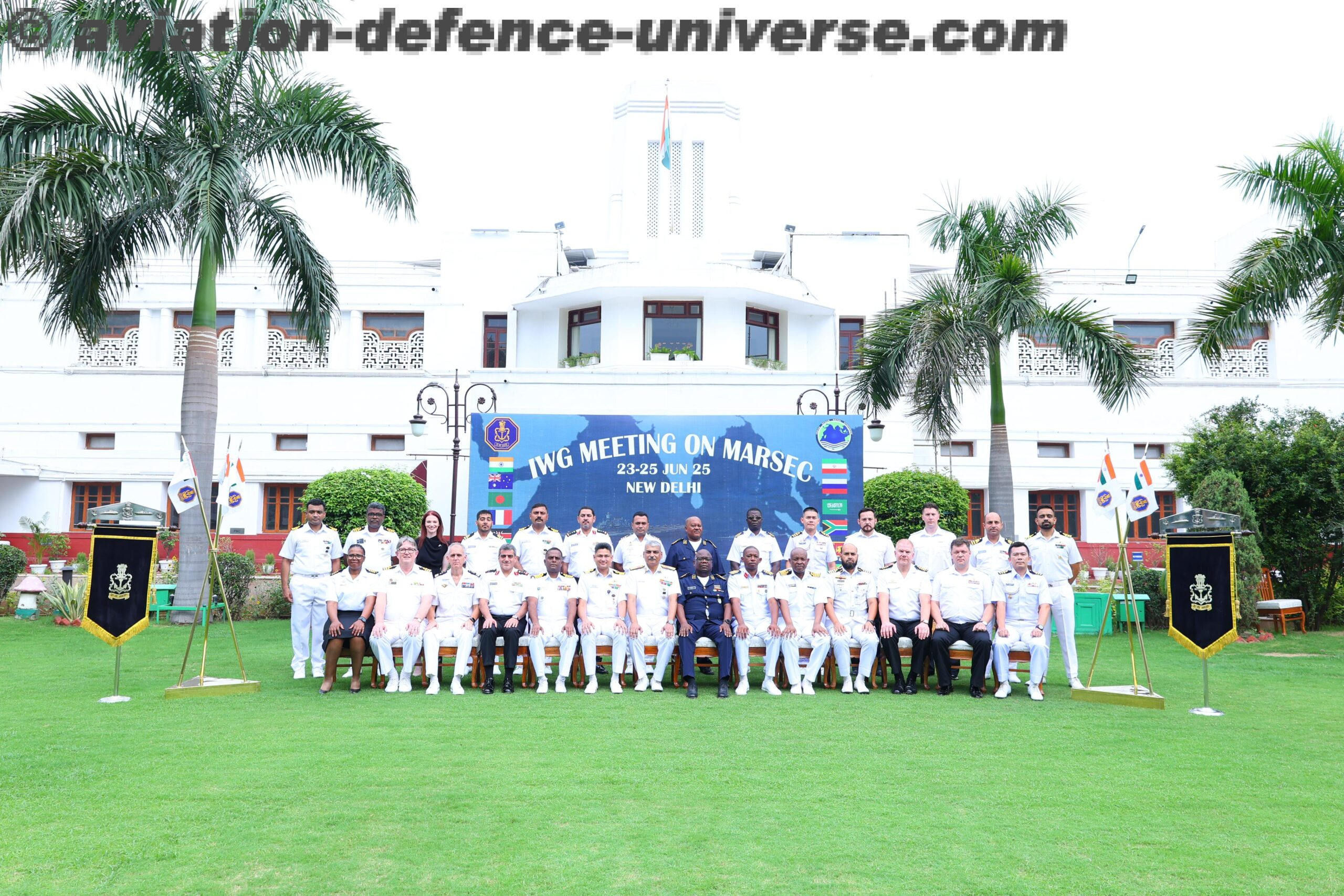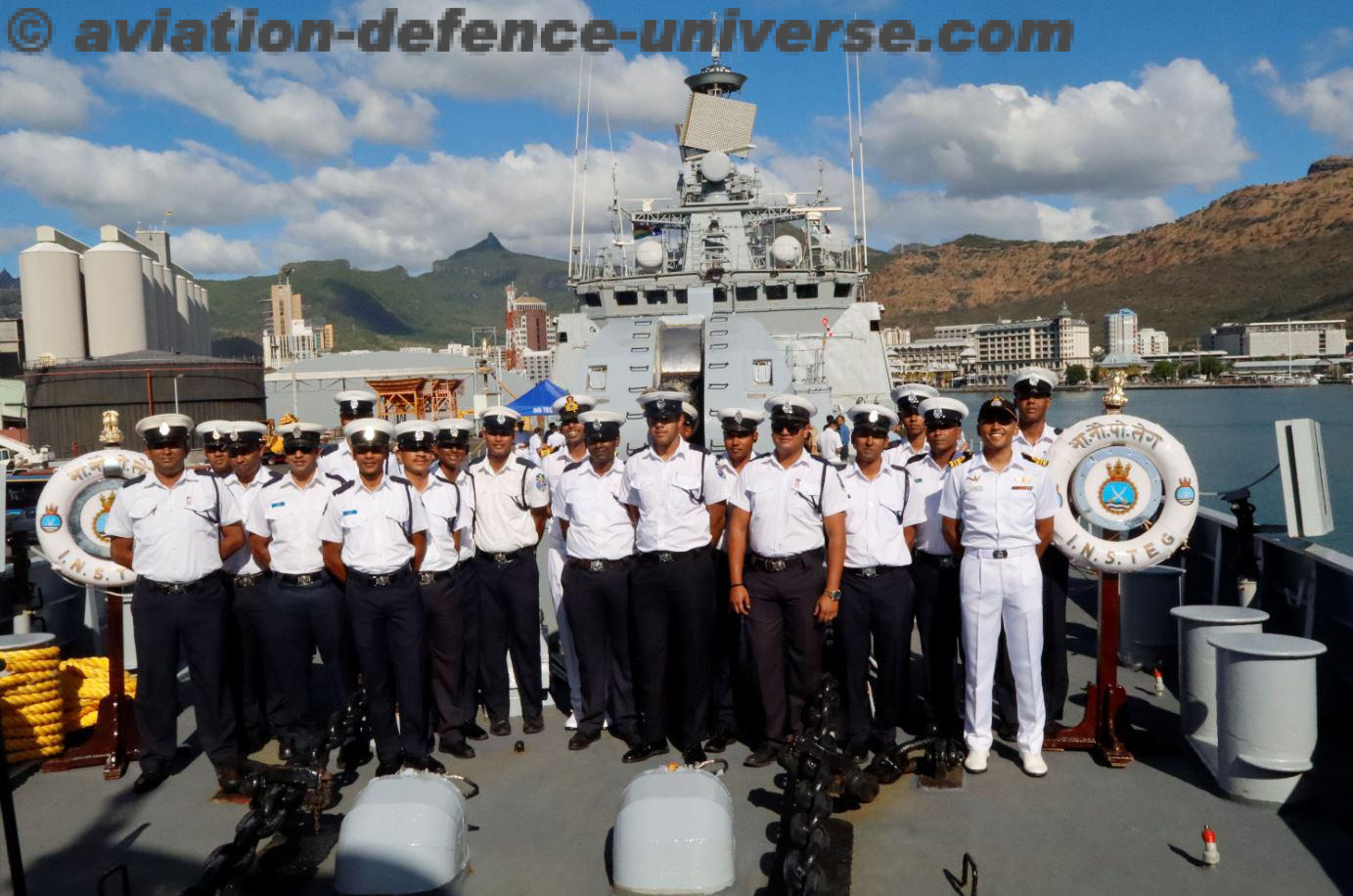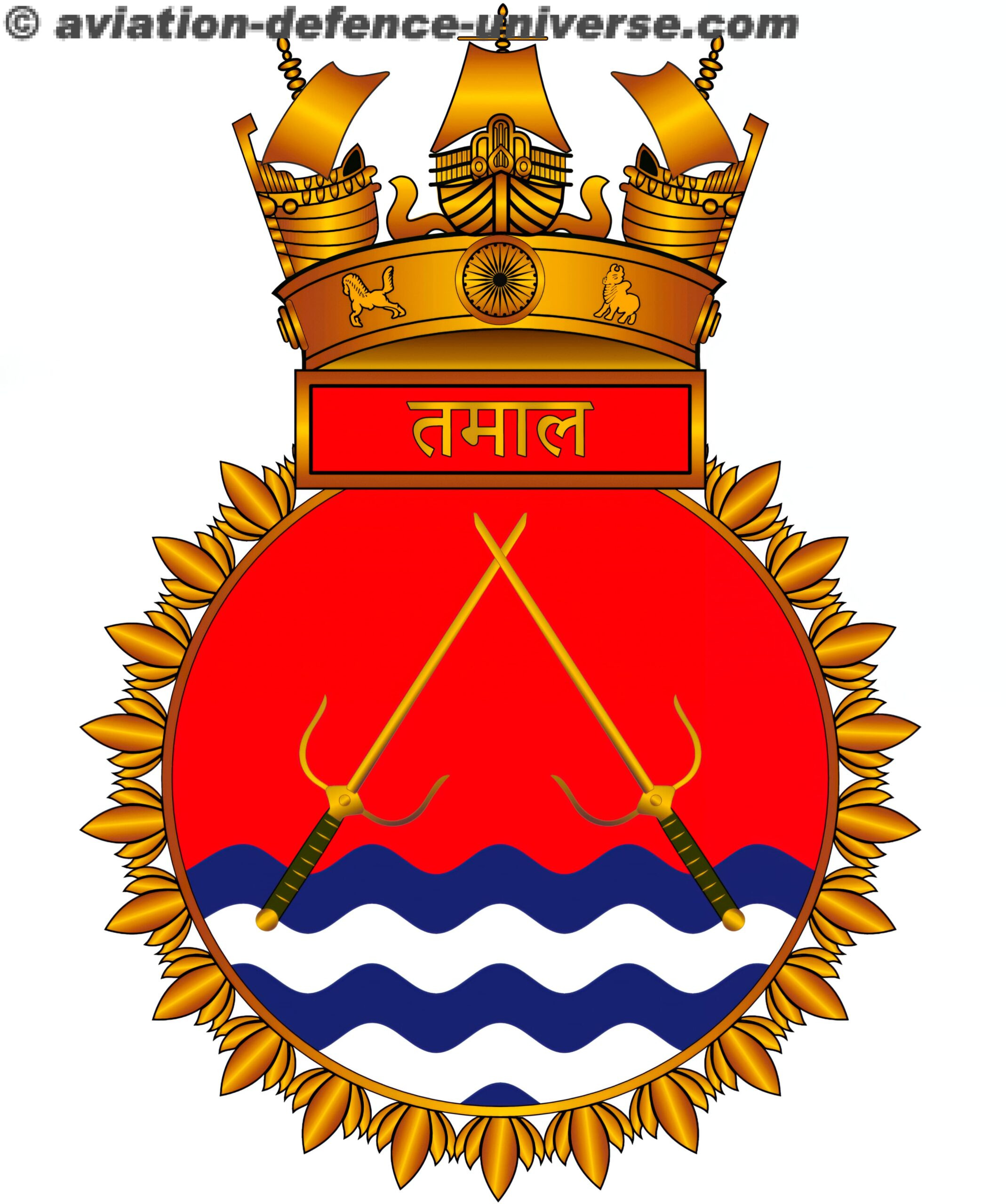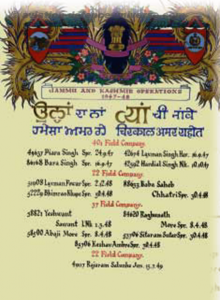
Independence To 1961 Bombay Sappers Marches AheadPune 23 January 2020 , J&K 1947-48 , units of the Bombay Sappers continued to live up to the reputation earned in World Wars I and II in the years after Independence. It was awarded the rare title “Royal” for its sterling services in World War I and was the first Regiment in the Indian Army during World War II to earn the prestigious Victoria Cross. It continued to provide quality Engineer support to field formations, and to undertake relief tasks arising from natural and man made calamities.
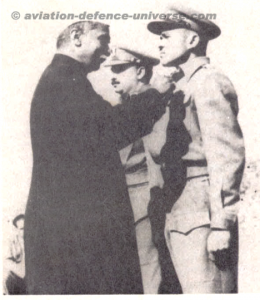
The very first commitment was in 1947-48 when Pakistani raiders from the NWFP, actively aided and abetted by the Pakistan Army, attempted to occupy the strategic State of Jammu and Kashmir. Maharaja Hari Singh, without any coercion, had opted to join the Indian Union. This attempt by the raiders was sudden and unexpected and the Indian Army had no option but to rush troops to Kashmir – by air to the Valley and by road to the Jammu Sector. Due to the terrain and poor road communications across the Pir Panjal through the Banihal Pass, the initial reaction was perforce slow, enabling the raiders to reach the outskirts of Srinagar. To provide engineer cover to the forward troops, 37 Assault Field Company under Maj (later Maj Gen) ‘Muddie’ Rao led the first Engineer Unit to arrive in Jammu on 20 November 1947, followed closely by 22 Field Company under Maj Ravi Bhargava. They had to bear the brunt of providing quality engineer cover to the infantry in the Jammu Sector throughout the operations there, keeping the tenuous road communications open under enemy fire. Four Bombay Sapper Field Companies were deployed in the Valley: 22 Field and 37 Assault Field Companies throughout the operations; 22 Field Company contributed its share from February 1948 onwards and 411 Parachute Field Company from mid 1948 onwards. Maj R M Rao’s 37 Assault Field Company supported 19 Infantry Division tasked to evict the raiders from Rajauri and secure the Line of Communications from Naushera to Rajauri in very difficult terrain. This axis for 30 miles was heavily wooded, and resolutely defended by the enemy with mortars and MMGs. Due to heavy rains, landslides along the hilly slopes were a problem and it fell to the lot of the Bombay Sappers to clear them, in addition to the road blocks created by the enemy. It was at this point of time that not only did the Regiment earn its first post Independence Battle Honour “Rajauri” for its commendable efforts to open the road under appalling conditions and a determined enemy, but it was also about to recreate history!
Lt R R Rane earned the Nation’s Highest Award for Gallantry, the Param Vir Chakra, thus repeating the feat of 2Lt P S Bhagat, the first Bombay Sapper to earn a VC in the Western Desert in World War II. 2Lt Rane’s citation and the presentation of this award for supreme gallantry in the face of the enemy says it all.
Having taken Rajauri, the next task for 37 Assault Field Company was to open the road to Poonch. To do so, this Company had to replace the old suspension bridge at Ramban over the Chenab, as it was not strong enough to handle heavy military vehicles. As it could not be strengthened, a 160 feet Class 12 Bailey Bridge was successfully launched, about 300 yards upstream. For this difficult task, 22 Field Company, under Maj A C Aga, joined in to complete the task. Inevitably, casualties were unavoidable. A Memorial to the Sappers who sacrificed their lives, now stands testimony to their courageous efforts. Operations to recapture Jhangar commenced on 15 March 1948. 22 Field and 37 Assault Field Companies advanced along the Naushera-Jhangar Road in support of 7 Light Cavalry, clearing anti-tank mines, constructing bridges and culverts, and clearing road blocks, to maintain the momentum of the advance. It was during these operations that 2Lt J P Chopra of 37 Assault Field Company was awarded the Vir Chakra when, braving enemy fire; he led the column seated in a carrier. After the capture of Jhangar on 18 March, the Company was redeployed for Op ‘Birbal’ for the capture of Thanamandi, along the alternative road to Poonch via Bafliaz/Surankote. It cleared the road for 60 miles under enemy fire. In the ongoing operations, the unit ended the year 1948 by opening the road to Poonch from Rajauri, as part of the force for Op “Easy”
Inauguration of Beri Pattan Bridge by Sappers Namdeo Pawar and Tukaram Godse
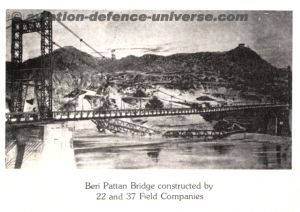
The Beri Pattan bridge over the Munnawarwali Tawi had to be made operational, as the existing one had been washed away and it was not possible for ferries to ply. The Company was given the task of constructing a 400 feet Bailey Suspension Bridge, and the 100 feet double-single Bailey Bridge at Beri Pattan in August 1948. They did this with the assistance of 22 Field Company, in the face of heavy enemy observed fire from the adjacent hill tops, and while the river was in spate. On completion of this difficult but successful task, the honour of cutting the ribbon to inaugurate it in the presence of Lt Gen K M Cariappa, Western Army Commander and Lt Gen Shrinagesh the Corps Commander, was given to two Bombay Sappers – Sappers Namdeo Pawar of 22 Field and Tukaram Godse of 37 Assault Field Company. This was a fitting tribute to the two Sapper Companies entrusted with this difficult task. 22 Field Company This Company was deployed along the Line of Control, improving roads and operating rafts at the Beri Pattan crossing, ferrying as many as 70 vehicles a day. As the year 1948 ended, this Field Company operated with Z Brigade Group providing engineer cover at Naushera, and guarding the Naushera-Beri Pattan Road which was subjected to heavy enemy attacks. It also cleared the roadblocks and demolitions used by the enemy to delay the advance, and in the process, repaired all damaged culverts and bridges. But this was not all. In February, the Company played the unusual role in defending Naushera against an attack by a large force of raiders. This unusual role of the Bombay Sappers paved the way for the capture of Jhangar. There was even more to come. 22 Field Company participated in the capture of Kot and the defence of Jhangar by being involved in the construction of the Beri Pattan Bridge, and in opening up the Naushera-Koteri road as a prelude to the Poonch link-up. This field company was involved with one more important engineer task. It took part with other units in the construction of the road Naushera-SunderbaniTamberi to reroute movement along the LC to avoid effective enemy shelling and out of hostile gun range, in just 3 days.
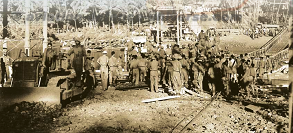
19 Field Company In recognition of the importance of Pathankot as a base, this Company constructed a fair weather airstrip, using PSP strips, at that location contributing to effective air support of the ongoing operations. In addition, it constructed a 17-span Hamilton Bridge over the Ravi river, using cranes to lift the 40 foot trusses constructed on the ground, thus enabling the task to be completed within a week. It also constructed tracks between Nastachun-Natchian, and Tangdhar-Bhatpura-Chamkot in that remote sector. 411 Parachute Field Company In June 1948, this Company commanded by Maj R L Anand, then deployed in remote Tangdhar across the Nastachun Pass, was also involved in road construction, laying mines and improving defences, especially troop shelters, for personnel of 163 Infantry Brigade, prior to the onset of the severe winters experienced there.
It is obvious that field units of the Bombay Sappers more than maintained the reputation of the Bombay Sappers in not only engineer tasks but in stepping up the defences to enable the infantry to resist enemy attacks, and to advance. It was also during this period that 2Lt R R Rane of 37 Assault Field earned a well-deserved Param Vir Chakra as described earlier. The Bombay Sappers Regiment also earned three Vir Chakras awarded to 2Lt J P Chopra, Jemadar Pandurang Deshmukh and Spr Laxman Pawar (posthumous), and as many as 33 Mention-inDespatches.
During this period of operations, one JCO and thirteen Other Ranks were killed in the line of duty. When the cease-fire was declared, the strength of the Group was 5,500 All Ranks. An important lesson emerged from the operations in J&K: the confrontation with Pakistan had not ended and would last for a long time.
The Hydrabad Action – 1948
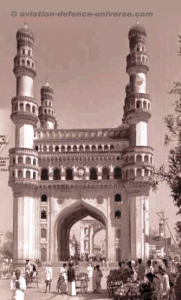
When India became independent on 15 August 1947, the Nizam of Hyderabad refused to accede to the Indian Union, although it entirely surrounded his territory, demanding the right as ruler of 18 million subjects to rule a separate state. This action between 13 to 17 September 1948 was against the forces of the Nizam of Hyderabad, who encouraged a fanatical Muslim organisation called “Razakars”. The Razakars were responsible for the deteriorating law & order situation based on communal hatred in the independent state of Hyderabad, forcing the Indian Government to intervene. 624 Army Engineer Group (Lt Col R R Bahl) was responsible for the Line of Communications upto Hyderabad and provided the engineer support for both the Western & Eastern thrusts to capture Aurangabad. The capture of Bidar airfield and Aurangabad forced the Nizam to surrender to the Indian Union. After the annexation of Hyderabad, the Group returned to Kirkee.
The terrain in Nagaland is fertile with a profusion of evergreen forests and scrub jungle. The rivers wind their way through deep valleys and flow towards the plains. Navigation in the rivers is difficult but is possible in parts. The Government of India, unlike the British, realised punitive measures would only increase hostility. In 1956 however, the extremist leader A Z Phizo whose anti-nationalistic influence of the Nagas, resulted in increase insurgency, forcing the deployment of the Army to deal with this menace. In mid June during Op ‘Raji’, 20 Field Company worked under HQ 632 Corps Troops Engineers (redesignated as Divisional Engineers) to construct and improve roads and tracks, bridges, water supply & electricity under Op ‘Milap’. This involved clearing landslides, building culverts, and retaining walls without local labour, aimed at breaking organised resistance. Roads & tracks were upgraded and a 170 feet bridge was constructed across river Diphu Pani at Chakabama.
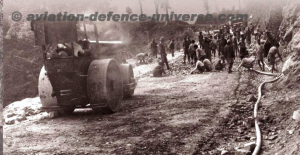
During the period till 1960, the rebels started resorting to hit and run tactics. 20 Field Company continued with the improvement of roads,and helped in the construction of a 80 feet suspension bridge over river Yeti, and a new diversion of 4 1/2 miles just outside Chakabama. 99 Field Company replaced 20 Field Company in the construction of roads and Class 5 bridges over the rivers Laniye, Tizu (200 feet length suspension bridge) and Diyung in 1961. 401 Field Company (Maj S K Mishra) cleared landslides on road Changki-Makula, involving 85 bore holes and 21,600 cubic feet of earth. It also constructed a 80 feet Class 12 Warren Girder bridge and a 240 feet cableway for 500 pound loads. In 1963, 8 Mountain Division was raised for Op ‘Orchid’ and for its support, 624 Corps Troops Engineers (Lt Col R K Kalra) comprising 18 and 19 Field Companies and 46 Field Park Company among others, arrived from Kirkee. They worked on the Mokokchung-Chakabama road, thus paving the way for the 16th State of the Indian Union to be inaugurated by the President in December 1963.
Op Vijay –Goa , Daman & Dieu
It took less than twenty-six hours to gain a foothold and just seven days for the Portuguese to surrender!
The operation involved a two pronged attack – one from the north and the other from the east. Among the formations and units that took part in the liberation were 20 Divisional Engineers (under the command of Lt Col A R H Veevers), 640 Army Troops Engineers, 641 CorpsTroops Engineers, 21, 23, 380, 482 and 484 Field Companies, 411 Parachute Field Company, 301 Field Park Company, 863 Engineer Works Section and 202 Bomb Disposal Platoon. The Bombay Engineer Group made available bridging stores/equipment, mine detector batteries, compressors, dozers and wireless equipment in addition to providing the required combat engineering support. 640 Army Troops Engineers and 484 Field Company did commendable work in the transshipment of huge quantities of stores from broad to metre gauge, at Poona for onward transit to Belgaum.
In the north, 20 Division Engineers supported the main advance of 50 Parachute Brigade. In a three pronged thrust, the platoons of 411 Parachute Field Company supported each infantry battalion. The Portugese had efficiently cratered the roads as a defence tactic and it fell to the lot of 411 Parachute Field Company to construct a 100 feet long boulder and brushwood causeway at Assanora and clear the Colvale-Mapuca road of anti tank mines and felled trees. To instill confidence that the mines on the road had been cleared Capt M S Gosain of 411 Parachute Field Company sat on the leading tank! 380 Field Company also cleared mines and created a crossing over the Piligao tidal creek, using storm boats, local ferry boats and commandeered barges. 21 Field Company led by Maj B P Pal also ferried vehicles and tanks across a 250 feet gap at Ussagao using decked rafts and commandeered barges.
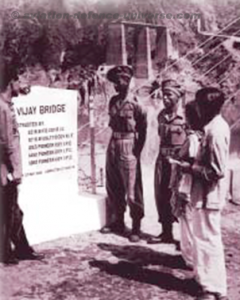
In the east, 23 Field Company supported 63 Infantry Brigade in its advance towards Ponda. It constructed a 240 feet Bailey Bridge at Candeapar and a 300 feet bridge at Benasterim and was ably assisted by 482 Field Company, while 481 Field Company removed booby traps, minefields and other obstacles en route. Post-Operation Tasks At 2030 hours on 19 December 1961, the Portuguese surrendered. The battle had ended, but not the Sapper tasks. Repair of the Benasterim bridge, clearing the beaches of Marmagao harbour of mines, repairs to the control tower and the underground drain water pipes damaged during the operation, were carried out by 863 Engineer Works Section. Maj A M Joglekar’s 202 Bomb Disposal Platoon destroyed unexploded bombs in-situ on the airfield and its vicinity. The repair and restoration of the water supply pipe lines destroyed by the Portugese from Candeapar bridge along the road bridges to Panjim, Marmagao, Vasco Da Gama and others were carried out by 411 Parachute Field Company under Capt M S Gosain. Advice was also given to the police about sabotage prevention and explosives.
The UN Draft resolution condemning the liberation of Goa was vetoed by the Soviet Union. Though most nations later recognised the liberation, Portugal acknowledged it only after its Carnation Revolution in 1974. On 30 May 1987 Goa became the twenty-fifth state of the Republic.































